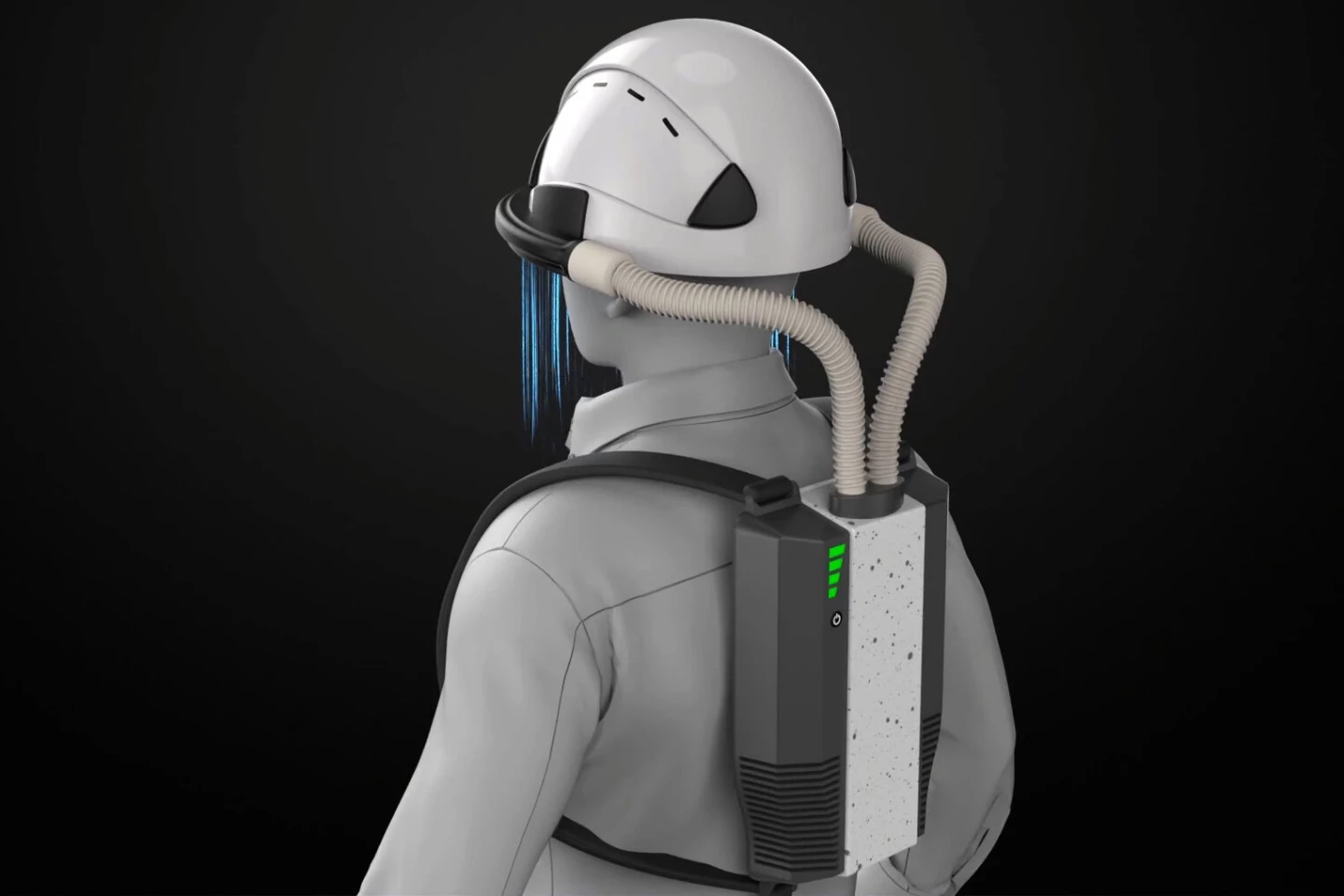A new device has been shown to protect wearers from airborne viruses while leaving their face mask-free. It blocks microbes via a curtain of air which has itself been pretreated to kill any viruses present within it.
Known simply as the "Worker Wearable Protection Device," the gadget was created at the University of Michigan by a team led by Assoc. Prof. Herek Clack. It is now being commercialized via his spinoff company, Taza Aya. And while the present model is aimed at people working in settings such as factories, a smaller, sleeker, consumer model is in the works.
The business end of the wearable consists of a row of downward-facing air nozzles housed in a visor which forms an arc around the front/brim of a hard hat.
Hoses run from either end of that arc down to a 10-lb (4.5-kg) backpack which contains the battery, electronics, air handling system, and a nonthermal plasma (aka cold plasma) module. The latter kills airborne viruses via ionized gas which it creates at relatively low temperatures.

Once the wearable is activated, the nozzles produce a particle-deflecting curtain of downward-flowing air that curves around in front of the user's face. Third-party tests have reportedly shown that even if that air was not sterilized, it would still prevent 99.8% of aerosols (including viruses) from reaching the wearer's face. That figure is said to climb to almost 100% when the plasma pretreatment is factored in.
The technology is currently being trialed at the Michigan Turkey Producers poultry-processing plant, where hundreds of workers are at constant risk of catching respiratory viruses from both one another and from the birds.

While paper masks were previously used at the facility, they made it difficult for workers to hear one another or read one another's lips on the noisy processing floor. The masks also caused workers' safety goggles to fog up, plus they couldn't maintain a facial seal throughout the day, and they had to be taken off when eating or drinking.
So far, the wearable has proven to be a reliable solution to all of those problems.
"We are pleased with the study results as we embark on this journey," said Taza Aya CEO Alberto Elli. "This real-world product and user testing experience will help us successfully launch the Worker Wearable in 2025."
There's more information in the following video.
Sources: University of Michigan, Taza Aya







